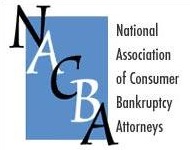I’ve spent hunks of the past couple of days working exemption issues in cases we’re filing.
California has opted out of the federal bankruptcy exemptions but has a bankruptcy-only set of exemptions that largely mirror the federal bankruptcy exemptions.
My typical client this year has substantially more income and more assets than the people I was seeing two years ago. Today’s client has more to protect, so I wallow in exemption issues.
In no particular order, here are the themes and problems that developed.
Allocate grubstake to cash
All other things being equal, if you have to choose between exempting cash and/or stock or vehicles, exempt the cash. If the non exempt asset has associated costs of sale or uncertain value, you will have an opportunity to negotiate with the trustee on the purchase of the asset by the client, or the timing of turnover.
There’s little discussion about the value of money on deposit or stock for which there is a market.
Count the transaction costs
If it costs the trustee 10% of the value of a car to pick it up and send it to the car auction, you only need to exempt 90% of the vehicle’s value. The remaining 10% of the value gets spent for costs of sale. Nothing remains to be distributed to creditors.
Don’t forget taxes
The sale of stock or investment property by a trustee may well trigger a capital gains tax to the bankruptcy estate. The longer the client has held rental property the greater the likelihood that they have depreciated the property on the one hand and borrowed against its value on the other hand.
Find out what the basis of the property is and calculate whether there is enough value in the property to pay costs of sale, capital gains taxes, secured debt and have anything remaining for creditors. If there’s no money on the bottom line after those expenses, you don’t need to exempt the asset.
Watch out for situations where the debtor has tax loss carryforwards that might offset the gains. Those tax attributes pass to the estate on filing.
Pin down the form of title
Make sure you know how the debtor holds title. One of my favorite approaches to difficult cases is a filing by only one spouse. It becomes important to know how the spouses hold title.
We were agonizing about some $25,000 in blue chip stock our married-filing-alone client held. We determined it was acquired during marriage, making it, we thought, community property.
When we got the account statements, lo and behold, the account was held as husband and wife, as joint tenants. Under applicable state law, joint tenancy is a form of separate property. Voila, our lady’s interest in the shares was just halved. [ This result may be altered by the CA Supreme Court’s decision in Brace.]
Under California law, property acquired by gift is the separate property of the recipient. That allowed us, in another case. to exclude the engagement ring of a non filing spouse.
Know your state property law and get the controlling documents so you include only what the debtor really owns.
Challenge your client’s values
Debtors, in my experience, often over-estimate the value of their assets. They hate to admit their home has fallen in value from a prior peak; they recall what they paid for items, not what they would sell for today. If values seem generous to you, prod.
Yesterday’s case included an entry for art and antiques, with a $5000 value assigned, and my paralegal’s note that the client didn’t think she could get that amount in today’s market. Well, then it’s not worth the amount assigned if it wouldn’t sell for that today.
And, of course, if you can’t arrange the exemptions to cover the client’s accumulations, and spending down assets isn’t feasible, then consider Chapter 13.
Image courtesy of NathanColquhoun.








